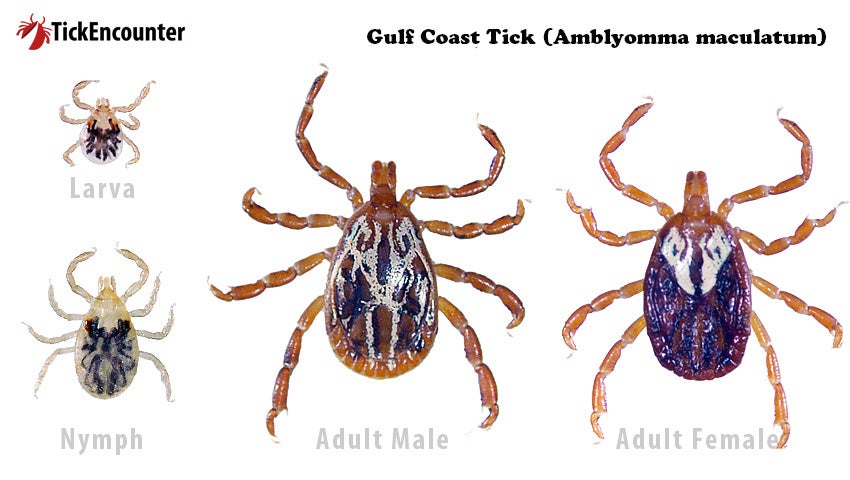
Overview
Gulf Coast ticks (GCT) are found in coastal areas along the Atlantic coast and Gulf of Mexico from New Jersey to Texas, but also extend their range into Oklahoma and Kansas. Gulf Coast ticks are 3-host ticks (uses 3 different hosts in their lifecycle) that feed on humans and animals and transmit germs, like Rickettsia parkeri, associated with moderate to severe medical and veterinary consequences. They are ticks of prairie grass meadows and shady, wooded edges. Studies suggest that a similar tick, Amblyomma triste found in South and Central America, Mexico, and the southwestern U.S. are genetically indistinguishable from A. maculatum. A reproductively prolific tick, a single female GCT lays an average of over 8,000 eggs.
Field Notes
Adult male and female GCT are sometimes initially confused with American dog ticks (ADT) but their long, slender mouthparts and more angular scutum are two identification characters that differ from ADTs. Adult male and female Gulf Coast ticks are active in April-October with peak tick encounter risk in July and August where they occur. Adult stages prefer to feed on larger hosts including deer, cattle, and other livestock.
Immature stage GCT (nymphs and larvae) feed on small mammals and ground-dwelling birds. Larvae are rarely encountered.
Life Cycle Stages
Larva
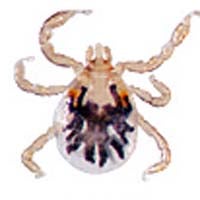 Top
Top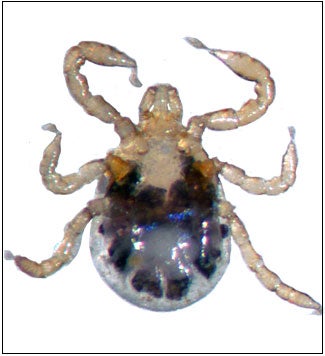 Bottom
BottomSoutheast Central Region
Encounter Risk
JanFebMarAprMayJunJulAugSepOctNovDecKnown Diseases Transmitted
No known diseases in this region at this time.South Atlantic Region
Encounter Risk
JanFebMarAprMayJunJulAugSepOctNovDecKnown Diseases Transmitted
No known diseases in this region at this time.Southwest Central Region
Encounter Risk
JanFebMarAprMayJunJulAugSepOctNovDecKnown Diseases Transmitted
No known diseases in this region at this time.
Nymph
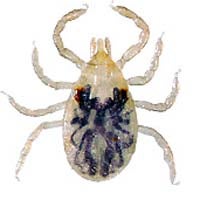 Top
Top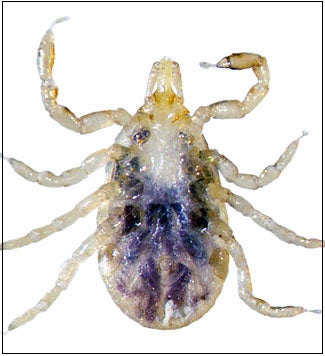 Bottom
BottomSoutheast Central Region
Encounter Risk
JanFebMarAprMayJunJulAugSepOctNovDecKnown Diseases Transmitted
- Canine Hepatozoonosis
Hepatozoon americanum (protozoan)
- Spotted Fever Rickettsiosis
Rickettsia parkeri (bacteria)
South Atlantic Region
Encounter Risk
JanFebMarAprMayJunJulAugSepOctNovDecKnown Diseases Transmitted
- Canine Hepatozoonosis
Hepatozoon americanum (protozoan)
- Spotted Fever Rickettsiosis
Rickettsia parkeri (bacteria)
Southwest Central Region
Encounter Risk
JanFebMarAprMayJunJulAugSepOctNovDecKnown Diseases Transmitted
- Canine Hepatozoonosis
Hepatozoon americanum (protozoan)
- Spotted Fever Rickettsiosis
Rickettsia parkeri (bacteria)
Adult Female
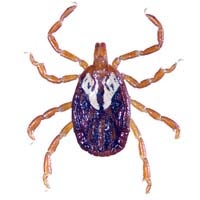 Top
Top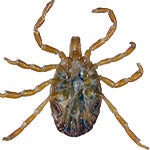 Bottom
BottomSoutheast Central Region
Encounter Risk
JanFebMarAprMayJunJulAugSepOctNovDecKnown Diseases Transmitted
- Canine Hepatozoonosis
Hepatozoon americanum (protozoan)
- Spotted Fever Rickettsiosis
Rickettsia parkeri (bacteria)
South Atlantic Region
Encounter Risk
JanFebMarAprMayJunJulAugSepOctNovDecKnown Diseases Transmitted
- Canine Hepatozoonosis
Hepatozoon americanum (protozoan)
- Spotted Fever Rickettsiosis
Rickettsia parkeri (bacteria)
Southwest Central Region
Encounter Risk
JanFebMarAprMayJunJulAugSepOctNovDecKnown Diseases Transmitted
- Canine Hepatozoonosis
Hepatozoon americanum (protozoan)
- Spotted Fever Rickettsiosis
Rickettsia parkeri (bacteria)
Adult Male
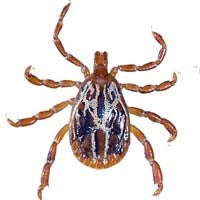 Top
Top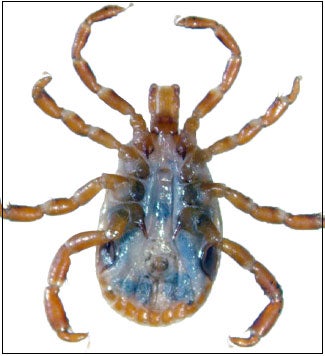 Bottom
BottomSoutheast Central Region
Encounter Risk
JanFebMarAprMayJunJulAugSepOctNovDecKnown Diseases Transmitted
- Canine Hepatozoonosis
Hepatozoon americanum (protozoan)
- Spotted Fever Rickettsiosis
Rickettsia parkeri (bacteria)
South Atlantic Region
Encounter Risk
JanFebMarAprMayJunJulAugSepOctNovDecKnown Diseases Transmitted
- Canine Hepatozoonosis
Hepatozoon americanum (protozoan)
- Spotted Fever Rickettsiosis
Rickettsia parkeri (bacteria)
Southwest Central Region
Encounter Risk
JanFebMarAprMayJunJulAugSepOctNovDecKnown Diseases Transmitted
- Canine Hepatozoonosis
Hepatozoon americanum (protozoan)
- Spotted Fever Rickettsiosis
Rickettsia parkeri (bacteria)
